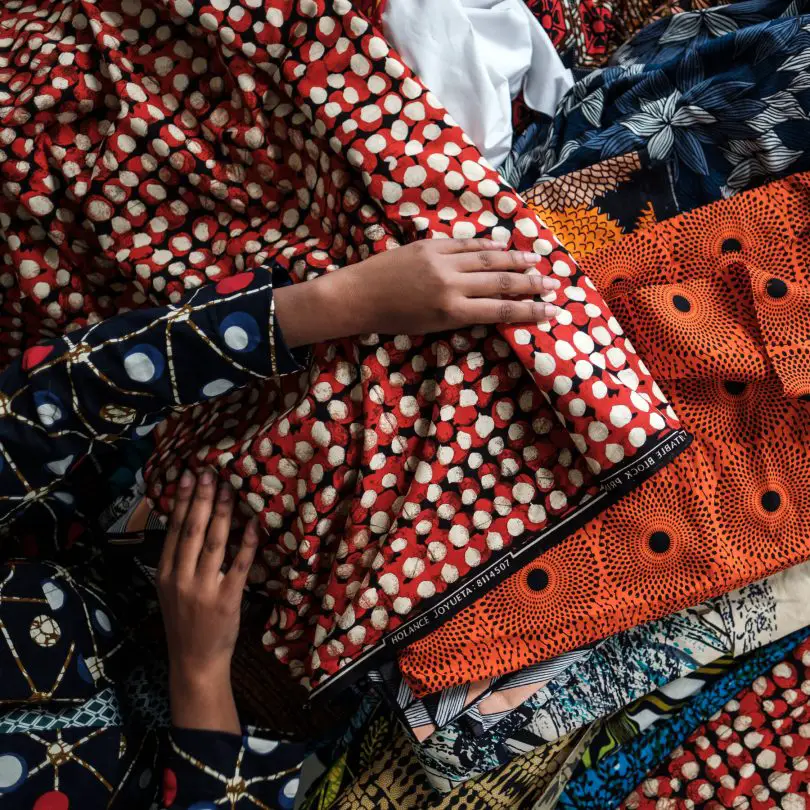The fashion industry frequently appears to be a continuous loop of styles and design. Some liken it to a dog chasing its tail. In the end, some consumers are left confused about what is in or out. Fortunately, African fashion is steering clear of current trends and reviving the good old values of the ‘old’ world.
Table of Contents
Disposable Fashion
Who remembers when the highstreets in Europe were full of fashion shops selling disposable fashion? One could buy a pair of jeans for $10, a top for $4, and accessories for $6. Unfortunately, these items were not durable and would look terrible after a few washes. These disposable fashion items would end up in landfill sites, some of which are in Africa.
In many respects, fashion resembles a fleeting kind of art. It manifests itself through shapes and textiles, patterns and trends, only to vanish the following season.
Also, it frequently manifests itself loudly and grandly during fashion weeks and events worldwide. The curtain then falls abruptly after a few minutes, leaving behind a trail of images splashed across Instagram squares and billboards, heavy price tags out of reach of many.
The Global Fashion Market
The problem is that the endless loop of fashion production is “pointless” and results in waste. People are moving away from cheap disposable fashion and turning the items of value. There was a November 2018 Bain & Company Luxury Goods Worldwide Market Study, which cements this.
The report focused on the global luxury market – which includes personal luxury goods, fine art, high-quality design, and furnishings. The luxury market grew by 5% in 2018 to an estimated €1.2 trillion.
This all came crushing like a deck of cards in early 2020 when the globe came to a standstill. The pandemic is responsible for affecting the fashion industry with the accuracy of a pair of scissors cutting through silk.
Suddenly, like with many other businesses worldwide, things came to a halt: no more fashion weeks, no advertisements on billboards; the slow, almost halting pace turned fashion on its head, at least for a few months. The discussion of sustainability, more careful production, meaningful collections, and collaboration with local craftspeople became increasingly vocal.
Africa Ahead of the Curve
African designers at this point were light years ahead of their Western counterparts in this sector. African fashion depicts its surroundings making it clever and insightful. Local designers’ collections frequently feature agility, originality, and a deep, almost emotional commitment to presenting authentic tales through clothing. With little support and little assistance from the government, limited access to luxurious materials, and a Western market with better and more connected infrastructures. African designers, artists, and creatives must rely on innovation and collaboration to advance. And they do progress; this is why the world needs to pay attention to African fashion.
Africa and Luxury
There are two reasons why the words ‘Africa’ and ‘luxury’ should exist in the same sentence. The first is a reimagining of what luxury is in the twenty-first century. Consumers, particularly in the western hemisphere, are developing an appreciation for products touched by human hands – and Africa’s handwork is outstanding. From the Tuaregs’ work for Hermes to the bags manufactured in Kenya for Ilaria Fendi, Stella McCartney, and Vivienne Westwood. African hands create aesthetic creations that are frequently also ecological and ethical.
Sindiso Khumalo
Let us take Sindiso Khumalo, for example. We have an LVMH Prize winner and a graduate of Central St Martins. She founded her eponymous label in 2015, focused on developing modern sustainable textiles with a strong emphasis on African narrative. Indeed, Khumalo designs her fabrics “by hand using watercolours and collage.”
Simply looking at her garments demonstrates how “conscious” her designs are: balloon sleeves on tailored wide-leg pants, barely-there frills enhancing the top of a blouse, and prints that evoke the rolling green hills and lush landscapes of KwaZulu-Natal, where Khumalo was born; her silhouettes are feminine, powerful representations of black women “from the turn of the twentieth century to the 1980s.

Sindiso Khumalo. Photo/Metal Magazine
Rich Mnisi
Rich Mnisi, best known for his branded knitted jumpers and collections influenced by pop culture and contemporary South Africa, founded Stories of Near as a sort of club, “a network of trailblazers reshaping the African fashion landscape.”
The club’s mission is to “create an ecosystem of stakeholders that share common values and objectives.”

Rich Mnisi. Photo/The Design Edit
Ib Kamara
We should keep an eye on Dazed editor Ib Kamara’s exceptional work. The Sierra Leone-born, London-based stylist is reimagining fashion visuals.
Aurora James, the founder and creative director of Brother Vellies – the designer behind Alexandria Ocasio-MET Cortez’s Gala gown “Tax the Rich” – is also the driving force behind The Fifteen Percent Pledge.
This non-profit organization invites “major Finally, Liya Kebede’s Lemlem. She founded it in 2007 and dedicated it to hand-woven garments made of cotton. The cotton has been “cultivated on Ethiopian fields since ancient times.” The label prioritizes sustainability and controllable quantities and orders over-rapid expansion at the price of quality and craftsmanship. This is the height of luxury.

Ib Kamara. Photo/ INDIE Magazine
African fashion drips of luxury that will last the test of time. In a world moving away from disposable fashion, international designers need to re-evaluate how they produce fashion. African fashion is sustainable, but it also captures the imagination of all those exposed to it.
Featuring bold lines and colours symbolic of the motherland, African fashion will always be relevant in New York or a street market in Mombasa.








